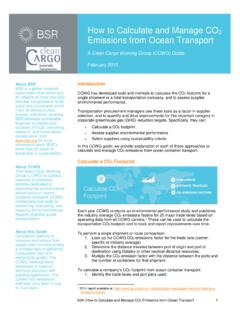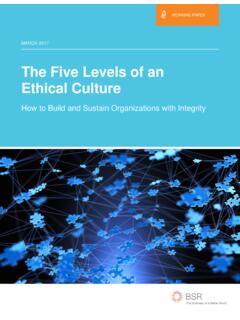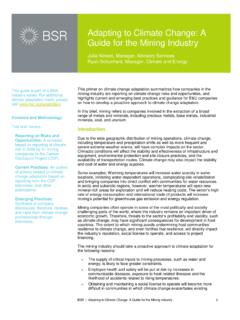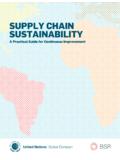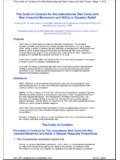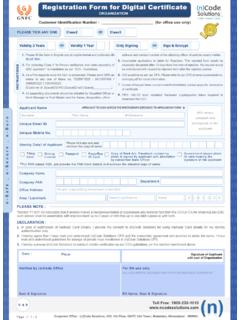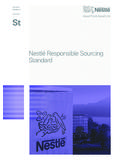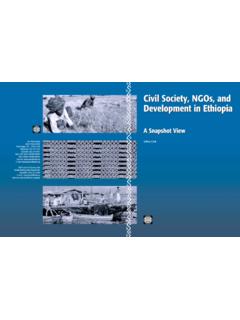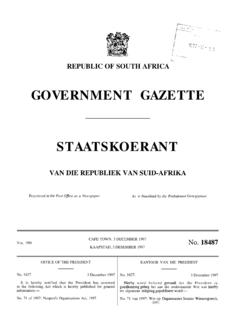Transcription of Gender Equality in Codes of Conduct Guidance - …
1 Gender Equality in Codesof Conduct GuidanceFunded by the Dutch Ministry of Foreign this Report BSR s Gender Equality in Codes of Conduct Guidance provides a framework for companies to integrate Gender Equality considerations into the standards they use to set supply chain ethical requirements. This Guidance is the first of a set of tools that aim at promoting practices and systems in supply chains that empower women. We would like to thank Meridian Group International, Inc. in particular for the key contributions made to the women s health component of this framework, under the USAID-funded Evidence the development of the Guidance , BSR has consulted with a number of external women s empowerment experts and other stakeholders including supply chain initiatives, NGOs, and companies on a one-to-one basis and through collective consultation workshops held in The Hague and New York. This Guidance has also been posted on BSR s website during a three week public consultation Guidance was written by Maria Pontes and Magali Barraja with input from David Wofford and Carolyn Rodehau from Meridian Group International, Inc.
2 Any errors that remain are those of the authors. Please direct comments or questions to report was sponsored by the Dutch Ministry of Foreign Affairs as part of a wider program focusing on catalyzing private sector action for women s empowerment. DisclaimerBSR publishes occasional papers as contributions to the understanding of the role of business in society and the trends related to corporate social responsibility and responsible business practices. BSR maintains a policy of not acting as a representative of its membership, nor does it endorse specific policies or standards. The views expressed in this publication are those of its authors and do not reflect those of BSR members. Executive Summary 4 Guidance Summary 6 Mainstreaming Gender Equality in Supply Chains 12 The Guidance 14 Why the Focus on Women? 16 Our Analysis 18 Gender and Codes of Conduct 20 Navigating the Codes of Conduct Principles 24 The Codes of Conduct Principles 1 Discrimination 252 Wages and Benefits 313 Forced Labor 394 Working Hours 435 Harassment and Abuse 496 Health and Safety 537 Freedom of Association and Collective Bargaining 638 Employment Relationship 679 Management Systems 71 Next Steps 77 Annex 1 | Treaties and Conventions 78 ContentsBSR | Gender Equality in Codes of Conduct Guidance 4 Women s rights and workplace-specific challenges are often addressed in very limited ways, if at all, in Codes of Conduct .
3 While recognizing the limited role that Codes can play in eliminating deeply-rooted aspects of Gender inequality in the workplace, it is important to recognize that they remain the most widespread approach used by companies to frame the directing principles that drive sustainability and human rights expectations throughout the supply chain. Companies use Codes of Conduct to communicate internally and externally about both their specific company values and the minimum requirements they expect suppliers to uphold. Executive SummaryBSR | Gender Equality in Codes of Conduct Guidance 5 Moreover, poor supply chain resilience and decreased business performance can result from company Codes failing to address the poor conditions and unequal treatment faced by workers, and in particular by women, in the supply chain. When Codes are weak and don t effectively address issues that affect a company s workforce, the risk of women being prevented from performing to their full potential is increased, and this can significantly disrupt supplier performance and ultimately a company s bottom line.
4 This Guidance recognizes that, although both men and women in the workplace face complex and different challenges, women are disproportionately affected by: exposure to the most vulnerable situations in a workforce ( , as migrants or homeworkers); and their specific Gender roles as women ( , caretaker, expectant mother, and mother). Women are also overrepresented in certain workforces ( , the ready-made garment sector or agriculture in countries like India), which highlights even further the importance of taking a Gender lens to compliance. This Guidance was developed to address this weakness in Codes of Conduct by offering a Gender -sensitive analysis of Codes of Conduct principles with a primary focus on women and making recommendations on how companies can strengthen their clauses to promote Gender Equality in the workplace, with a specific focus on developing and emerging markets-based supply chains. The Guidance , which is not advocating for the establishment of a new code , is structured around two main sections: Traditional issues found in Codes related to conditions of employment and employment-related benefits and rights (what we identify as being the most widespread clauses in Codes of conducts); Relevant Gender issues that are not generally included in Codes of Conduct but are linked with many core issues addressed by Codes .
5 These may not ultimately go into new language, but they are in the Guidance because they are issues that leading companies need to understand and address ( , financial inclusion, health considerations beyond Health & Safety, communication and leadership training).This Guidance is intended as a tool to help companies and stakeholders more clearly identify the intersection between the core principles of a code of Conduct and specific women s needs and vulnerabilities. The objective is to provide business with a clear and common set of requirements that can be integrated into their existing Codes of | Gender Equality in Codes of Conduct Guidance 6 General Considerations Since language is important, mention men and women instead of just workers. Use the code of Conduct as a statement of commitment to Gender Equality . Integrate Gender considerations into buying practices, which are pivotal to supply-chain business strategies. Collect Gender disaggregated data. Maintain Gender -sensitive grievance procedures.
6 Ensure all workers are aware of the protections and requirements of the code of Conduct . Recommended Clause Wording 1 Discrimination Women and men workers shall be protected against discrimination on the basis of marital status. Pregnancy tests or the use of contraception shall not be used as a condition of hiring or continued employment. Women workers shall be protected against threats of dismissal or any other employment decision that negatively affects their employment status in order to prevent them from getting married or becoming pregnant. Equal opportunities for women and men shall be provided in all aspects of training and personal and professional development. Workers with family responsibilities shall be protected against discrimination with regard to dismissal (see ILO Convention No. 156). Guidance SummaryBSR | Gender Equality in Codes of Conduct Guidance 72 Wages and Benefits Fair and comparable wages, hours, and benefits are guaranteed to all workers for comparable work.
7 Every worker, male or female, has a right to compensation for a regular workweek that is sufficient to meet the worker s basic needs (such as food, water, housing, healthcare, education, transport, and clothing) and provides some discretionary income for the workers and their families. Women employees are entitled to maternity protection (leave and benefits as well as protection against discrimination) in accordance with the requirements of national laws and regulations or ILO Conventions Nos. 183, 103, and 3), whichever is higher. Childcare benefits and special leave or working time arrangements for workers with family responsibilities shall apply to both men and Forced Labor Migrant workers shall have exactly the same entitlements as local employees. Any commissions and other fees in connection with employment of migrant workers must be covered by the employer. The employer must not require the employee to submit his/her identification documents. Deposits are not allowed.
8 Workers employed through an agent or contractor are the responsibility of the supplier and other business partners, and are thus covered by this code . Practices that restrict workers freedom of movement or ability to terminate his or her employment are prohibited. Workers, both men and women, shall not be required to make deposits and/or financial guarantees and their identity documents (such as passports, identity cards, etc.) shall not be | Gender Equality in Codes of Conduct Guidance 84 Working Hours Policies for the calculation of basic wages, overtime, bonuses, and payroll deductions are the same for both men and women workers, and measures are taken to ensure that all personnel understand these policies. Piece-rate work shall not be exempted from the right to overtime compensation. The imposition of overtime where women or men workers are unable to leave the work premises or are in any way forced to accept it (through abuse, threats of dismissal, or other) is not allowed.
9 5 Harassment and Abuse All forms of violence and harassment in the workplace, including verbal, physical, sexual, or psychological abuse, are prohibited. Sexual harassment, including unwelcome sexual advances, unwanted hugs and touches, suggestive or lewd remarks, requests for sexual favors, or the display of indecent, derogatory, or pornographic pictures, posters, drawings, or videos, is prohibited. Sexual harassment in any form is not acceptable in the workplace or in any facilities related to the workplace, including transportation and dormitories. All workers are protected from retaliation for complaining about harassment. Security staff, doctors, nurses, managers, and other key personnel (where relevant) are regularly trained to recognize signs of Gender -based violence and understand laws and organization policies on human trafficking and sexual exploitation. BSR | Gender Equality in Codes of Conduct Guidance 96 Health and Safety Access to basic healthcare services shall be ensured to workers in accordance with national law and international norms (including UDHR and CEDAW), recognizing Gender differences and specifically facilitating services for migrants and their dependents who may face language or other social barriers to care.
10 Reasonable actions should be taken ( , providing on-site clinics, a strong referral system, and external health providers) to ensure that workers have access to health services and insurance that serve the distinctive concerns and needs of women and men. On-the-job attention and accommodations shall be given to ensure that the reproductive rights of women and men workers are respected, which includes ensuring access to family planning products and services and care relating to pregnancy, maternity leave, and childcare. Feminine hygiene products also shall be available to women workers. Men and women workers engaged in working with hazardous materials will be informed of the potential risks to their reproductive health. To prevent unsafe exposure to hazardous chemicals and hazardous substances, appropriate accommodations shall be made for pregnant women. The number of toilets within reasonable distance of the workplace required under applicable laws shall be provided. The number of toilets shall also take into consideration the number of workers, privacy for each individual and Gender , accessibility, and hygiene.

